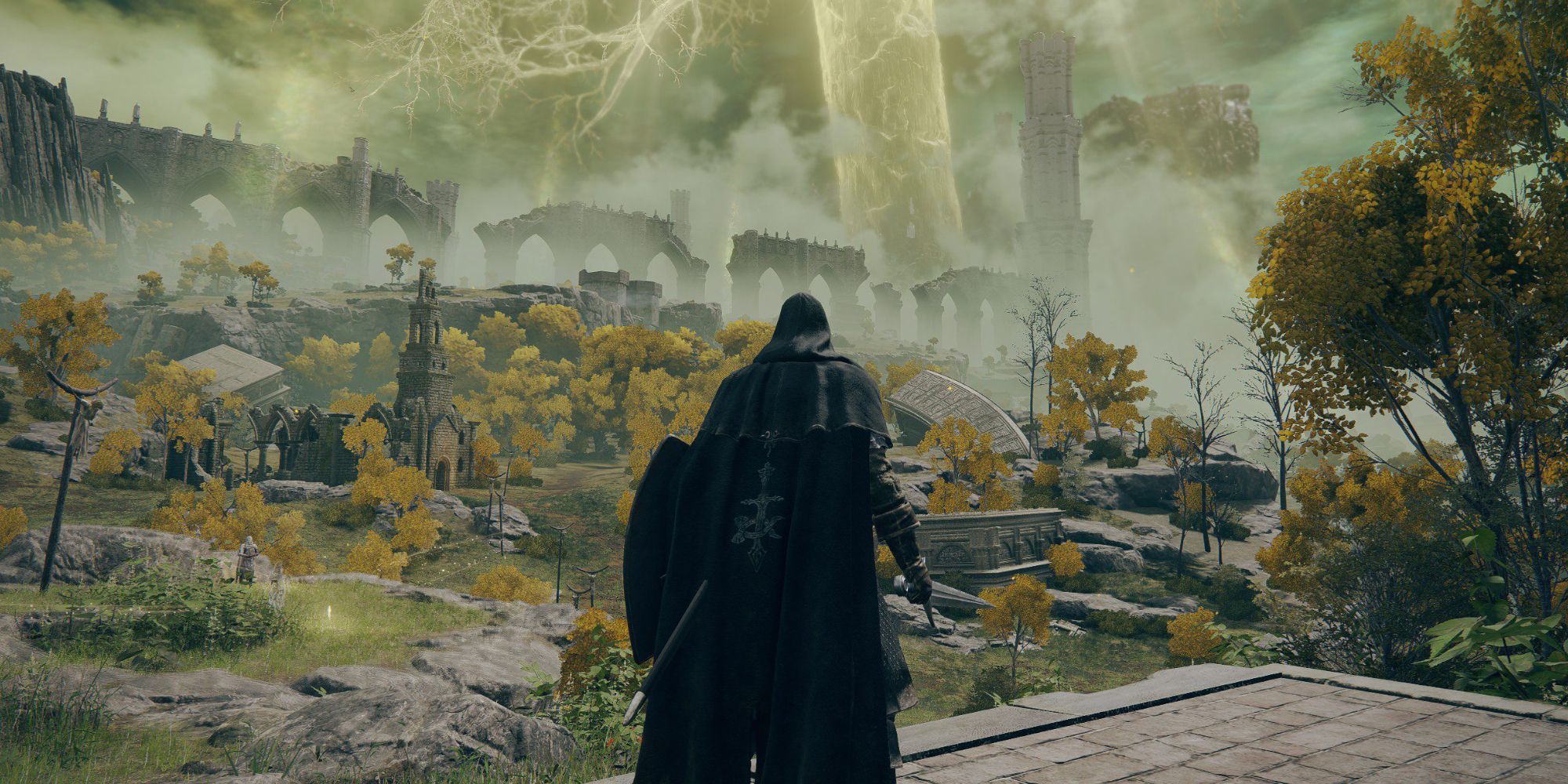Elden Ring has been out about two weeks, which means the discourse machine is in fifth gear already. Amazingly, it’s not all about the game’s difficulty and whether it needs an easy mode or not, which everyone seems to have braced for and as a result few people have gone near. This time, it’s about the UI and UX.
By now, most gamers know what a UI is. It’s all the information on your screen, the way you interact with the information in the world: the User Interface. UX is a little trickier to explain. It means User eXperience and is more cerebral. Simply put, UX is about the thinking processes and behaviours a player will have.
Now that we’ve got some very basic definitions for these speciality concepts that people dedicate their entire careers to, let’s get into the meat of the debate. Is Elden Ring’s UI/UX bad? Taken on its own, this is a fine and valid question to ask. Games should be criticised to make them better. I am absolutely loving Elden Ring, but I don’t believe it to be without flaws. It would be a disservice to the developers and the medium to think otherwise.
As with most discourse in gaming, this started as a single tweet which suddenly snowballed. One triple-A dev, perhaps jokingly, suggested UX (and therefore their own career specialty) must not mean very much if Elden Ring can pull in record-breaking review scores. A couple of other devs agreed by adding that reviewers must also not care about PC performance and quest design. Even if they were all joking, that’s now three jokes for people to miss, not just one. It’s understandable why people would think these devs were just being salty that Elden Ring got a 97 on Metacritic and their games didn’t.
The truth is a little more complicated. Our Editor-in-Chief, and one of just nine people on the planet to have played Elden Ring and not enjoyed it, has pointed out that most reviewers had long bought into the FromSoft formula, meaning the reviews reflect a rating of how that formula has been perfected in the open world format, rather than a critique of the formula itself. Some people like games that other people don’t. That’s all this needs to be. But it’s become more than that, and now I’m having to write this instead of looking up the great memes this game has spawned.
Hyperbole is now rife on all sides. We’ve got some people claiming the UX is flawless and if you think it’s anything other than perfect then the game just isn’t meant for you, you stupid racist scrub. There’s a very real discussion to be had here about Western expectations of user experience and various design philosophies being applied to Japanese games, but Twitter is where nuance goes to die, so I’m not expecting much to come of this right now. It’s one I’m fascinated to see in the future once we’ve all simmered down a bit.
Then there’s the other side of the debate, which is that the UX is fucking trash and if you think it’s not you’ve got FromSoftware brain rot due to your ceaseless fandom of its games. There are some glaring flaws in the UX: you close the map with a different button you use to open it, the option to sort your inventory by most recently acquired item is hidden, the best advice on keeping track is to write copious notes in a real-life notebook, assistance is limited and minor… the list goes on. The first two, the least ‘git gud’ style complaints, can’t really be countered. You open the map and look for items a lot, so these are… , let’s be charitable and call them ‘quirks’, you’ll be coming up against frequently.
Most other triple-A open world games have it so the same button opens and closes the map, but Elden Ring isn’t most open world games. It’s about ignoring what you thought you knew about open world games, and even other Soulsborne games, as the entirely missable tutorial demonstrates. The game is about friction – between you and the world, and as this UX debate is showing, even you and the menus.
But honestly, at the end of the day, is this really that deep? FromSoftware fans will be used to these quirks by now and aren’t noticing them at all. Newcomers are finding that Elden Ring is a lot more confusing than they thought it would be because all the diehard fans said it was the most accessible Soulsborne ever. Some of those newcomers have been enraptured by FromSoft’s style, others have been pushed away. Oh, and some devs joked, maybe a little meanly, on Twitter about the review scores. The sky is falling.
A more interesting discussion is why all the people that gave this game a perfect score did so despite these issues. It’s hard to put something as nebulous as the way a game feels into words, but it’s a powerful thing – especially when you’re a fan, which to review a difficult game like Elden Ring, you kind of have to be. Playing this game feels incredible, even with the little gripes. It might be hard to believe it, but most people just don’t care about these relatively minor issues compared to the vast scope of the game when taken as a whole. Elden Ring is more than the sum of its parts, so it's understandable that it’s a little confusing when your job is to hone in on one very particular aspect of a game’s design.
Most modern games in this genre take you by the hand, slap a to-do list in front of you, and patiently wait while you cross everything off it. Elden Ring does the opposite and people still love it. It lets you discover everything on your own. It’s almost like people can get sick of being given the same things again and again and are willing to tolerate some jank for the sake of a new experience. Are some devs just out of touch? No, it’s the children who are wrong.
Source: Read Full Article


